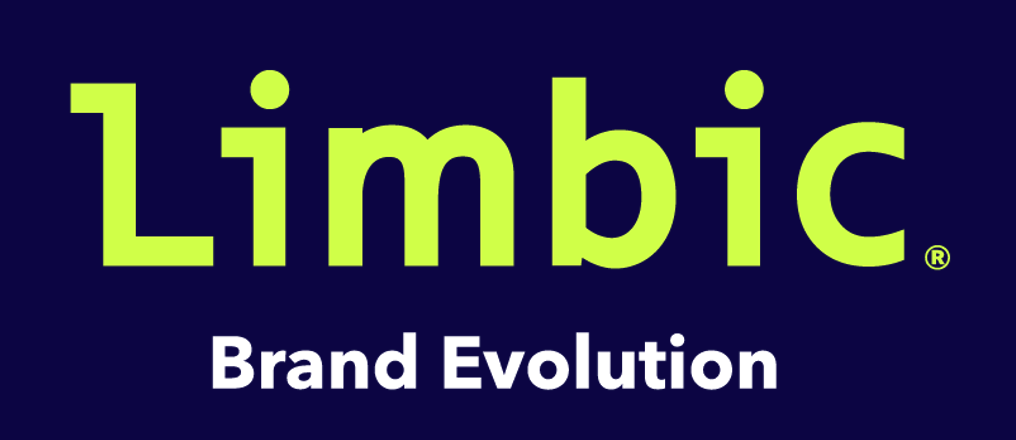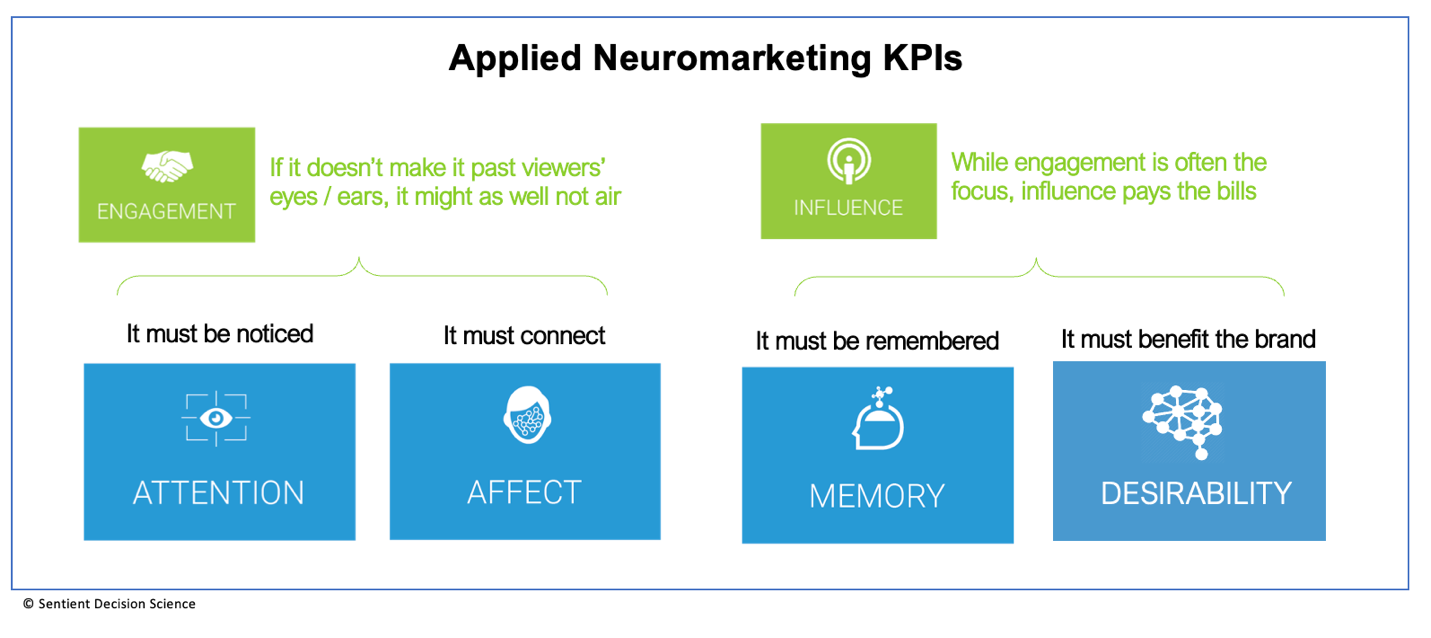Applied Neuromarketing: Improving the Creative Brief
Are you in search of the perfect creative brief? So many of us are.
For decades, agencies and clients have been trying to create the perfect creative brief. While there is no end-all-be-all solution, here is how creative briefs can be greatly improved to become more inspiring and to lead to more effective creative work. By applying a neuromarketing orientation, briefs will better address insight into customers' motivations, preferences, and what drives behavior.
Current Situation: Why are we doing this?
Have you heard the one about the timetable that has three weeks for brief development and one week for creative development?
Tension around the creative brief is always high. It's the focal point of a lot of attention, and it’s the blueprint for a lot of creative exploratory and marketing spend. As such it needs to be more insightful and inspiring.
The fact is that the creative brief is broken. Despite massive changes in consumer behavior and our understanding of it, the basic elements of the creative brief have barely evolved. Its origins come from a time when advertising was the dominant form of marketing, long before online reviews, customer experience and social media became significant influencers of buyer behavior. Still, most creative briefs are full of details that the brand wants to tell people, with minimal new insight about why people should care.
Consumer Insights: What matters most to people?
Each of the three groups impacted by the creative brief have different perspectives, priorities, and needs. To truly motivate them, we need to understand what matters most to each at a deep emotional level.
Creative Team Insights
I feel for creative teams. You’re responsible for having amazing, original ideas every day, on every project. You’re torn between what you feel is a great idea, and what the client will buy. To sell and produce an idea that you are proud of and propels your career forward requires a lot of needle-threading. The chances of something going south are high, and it's why the Director’s Cut was invented. As you walk into the meeting where the brief is revealed, the biggest thing on your mind is “I hope this brief doesn’t suck”. Of course, that’s code for "I hope it inspires an amazing creative idea that will be part of my book, impress my friends, my family, my creative director, my client, and win me lots of awards. When do we leave for Cannes?" You want and deserve a brief that inspires great work.
"At the end of the day, I want to put the best, most impactful, most talked-about creative work out there.", says Della Mathew, SVP Creative Director of 22 Squared.
Client Insights
The creative brief is your most important starting point in the creative process. You write the brief with input from many people in your organization, and you’re under pressure. By the time the creative brief is presented, there's been lots of offering development, strategy, planning, goal setting, budget wrangling, wordsmithing…it’s behind schedule. There's so much that you want to convey - the features, benefits, proof points, reasons to believe and of course, the big idea. On your mind is, “There's a lot riding on the quality of this work. We've got to make our numbers and this needs to be a home run. When is the first-round presentation?” Typically, however, you’re striving for brilliance in engaging consumers, with a brief that is too much about your brand and offering, and very light on consumer insight.
Megan Baker, CMO of Wells Fargo Auto shares, “The value of a brief is to clearly connect your customer’s needs with your product offering. To do that, you need customer insights and a clear articulation of the behavior change you’re trying to inspire. Connect that action to how your product solves for their needs in the brief. Too often, this connection is missing for the creative team.”
Customer / Prospect Insights
Consumers and prospects alike are eagerly waiting for your brand's next ad. Just kidding. In fact, they absolutely are not. You see, people aren't walking around looking for brands, or waiting for your creative. They’re going about their day, actively hitting the "skip ads" button whenever possible. They're busy, distracted, and focused on their own life. They're seeking happiness, less stress, the ability to overcome challenges and perpetual well-being. The last thing they want is to be inundated by irrelevant brand messages. It’s why those with engaging, relevant, thoughtful, helpful, and life-enhancing offerings by brands that give consumers the answer to “What's in it for me?”, have the best chance of piquing someone’s interest.
Simply put by Joe McCambley, Chief Marketing Officer at Saatva, “Brands that help, sell. Brands that sell, don’t.”
Key Takeaway: How Can We Improve People's Lives?
It's time for a new creative brief, one rooted in a scientific of understanding of human behavior that will lead to more inspiring briefs and more effective creative work.
By applying neuromarketing, we know that we must refocus the perspective of the creative brief from brand-out, to consumer-in. In doing so, briefs will be rich with deeper insight about how this brand and its offering can improve people’s lives. Further, they will guide creatives to think more about the people whose attention they’re trying to capture, versus how to cram in all the proof points and mandatories.
Call to Action: What Behavior Change Do We Want to Inspire?
Going forward, we need to flip the perspective of the creative brief from "About Us" to "For You".
Imagine if someone said, "to strengthen your relationships with your significant other, you must prove your love." Then, your response was to eagerly present to your partner all the reasons to believe that you are the perfect partner. You start listing the proof points for why you are great, and each of the good things that you do.
Alternatively, instead of talking about yourself, you can make your partner feel loved through words and actions. You can use your understanding of what your partner cares about the most, to say and do things that demonstrate how much you care.
This is where our creative briefs are going wrong. They are sending creative teams down the wrong path, and we need to flip the perspective for them to be more inspiring and successful.
Emotional Benefits: Why Should People Care?
I’m sure you’ve heard the expression “we buy on emotion and justify with logic”. This refers to the idea proven by neuroscience that our emotions play an overwhelming role in the decisions that we make. While our conscious brain may take over to justify or overrule, our emotional instincts are the first thing that get triggered.
Here’s why it matters, why we should be applying neuromarketing, and focusing on "Reasons to Care”, not "Reasons to Believe".
People are indifferent to our brands, until they have a reason to care.
Neuromarketing refers the study of relevant human emotions and behavioral patterns associated with products, ads, and decision-making. By tapping into neuro insights, creative work will have a better chance of success. While it may sound complicated or expensive, it just entails bringing a new perspective to the work you’re already doing that will have a significant impact on the creative outcome.
For creative teams, having neuromarketing insights as part of the creative brief means that they will be starting from a place of greater target audience understanding, with more nuances about how a brand fits into people's lives and the emotional reasons why people should care. This shift will lead to more relevant brand storytelling rooted in the human experience.
For clients, applying neuromarketing insights will lead to more effective marketing. We know from over a decade of confirming research studies that emotion is the largest driver of loyalty for brands, and how a brand makes people feel has the most impact on future business. Briefs will be better, and research techniques will be more reliably predictive.
For customers, the fact that neuromarketing insights led to the brand communication will be invisible, but your brand will be more prominent, engaging, and considered, because its messages and experiences will be more relevant.
Dominik Prinz-Barley, Head of Brand Strategy at Google, shares why this is so important: “Look for the moments in people's lives where they struggle, or where they have a problem that's worth solving. Or are simply frustrated with how certain products or services work, and then find a way to make that experience fundamentally better. Any brand that does that well, will capture the hearts and minds of people.”
Key Performance Indicators: What Does Success Look Like?
Ultimately, all marketers are striving to increase sales and deepen brand loyalty. This can be done more effectively from the outset by writing briefs that are better crafted with greater insight. Impact can also be measured and fine-tuned when we're focused on the right KPI's.
Joe Sauer, SVP & Managing Director of Sentient Decision Science, a neuromarketing research company, sheds some light on this from an applied neuromarketing perspective. He explains that the two most important criteria for successful marketing, on the road to sales and brand loyalty, are: Engagement and Influence
These KPI's are based on a scientifically validated behavioral model called the Theory of Persuasion. When creative work and brand experiences are performing at high levels for each, the result will be better brand result such as engagement and sales.
When tapping into neuroscience research techniques Sentient uses, these KPI’s can be tracked after the launch of creative, and they can also be evaluated and improved upon while creative is still in development.
Joe shares, “Neuromarketing research can help creatives and clients execute the creative process in a way that you’re making nudges, tweaks and optimizations along the way, rather evaluating the work at the end after everything is developed.”
Capturing real-time feedback on details in the creative that are causing people to have positive or negative subconscious responses can ultimately improve the effectiveness of a piece of communication before any media expenditure.
Improving the Creative Brief
Better inputs lead to better outputs. Bringing neuromarketing insights into the creative brief can inspire creative teams with deeper consumer insight, lead to creative work that’s more relevant to the people it is intended to reach, and have more successful outcomes for your brand.
It requires flipping the perspective from “About Us” to “For You” and prioritizing “Reasons to Care” over “Reasons to Believe”.
So, what does a creative brief look like that is both inspirational and that leads to more effective creative work? If you’ve made it this far, you’ve just read it.
While it might not be the final draft of the singular brief for the entire industry, it is certainly a more effective way to start, rooted in how our brains process information, create feelings and associations, and trigger behavior.
Give it a try to see how it inspires your creative teams and leads to more effective creative work for your brand. That’s something we all care about.
Cover image source: Bret K.
Featured Articles & Podcasts







